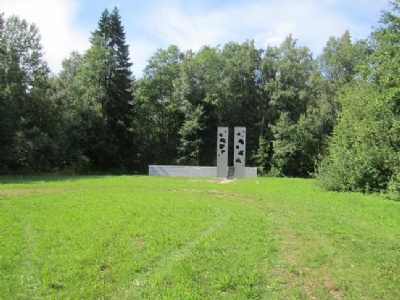Ereda
In a forest outside a small town called Ereda in northern Estonia, the Nazis established one of the first satellite camps for Vaivara in the autumn of 1943. The prisoners were Jews who came from Lithuania and Germany and were used as slave workers in a slate mine. In connection with German troops retreating westward, the camp became a collection camp for prisoners evacuated from camps further east, including Vaivara. Hundreds of prisoners were shot outside the camp as a consequence of selection. Meaning that sick unproductive prisoners were taken away and killed. The camp was closed in autumn 1944 and the prisoners were forced out on Death marches westwards. Some by boat from Tallinn to the Stutthof concentration camp in Poland. Barely 2,000 Jewish men, women, and children were incarcerated in the camp during its existence.
Current status: Demolished with monument (2010).
Location: 59°19'43.57" N 27°15'25.24" E
Get there: Car.
Follow up in books: Kogon, Eugen: The Theory and Practice of Hell: The German Concentration Camps and the System Behind Them (2006).


It is rather difficult to find information about the number of prisoners, mortality, organization etc about camps such as Ereda, Kiviöli and Kuremäe. Some camps, like Lagedi south of Tallinn, doesn’t even "exist" anymore. But this was not unique to camps in the former Soviet Union where the traces of the smaller camps were swept away. The testimonies of the few survivors were forgotten or ignored and no detailed investigation of the camps was carried out. This is also a problem that exists among similar western European camps, but there the information is better.